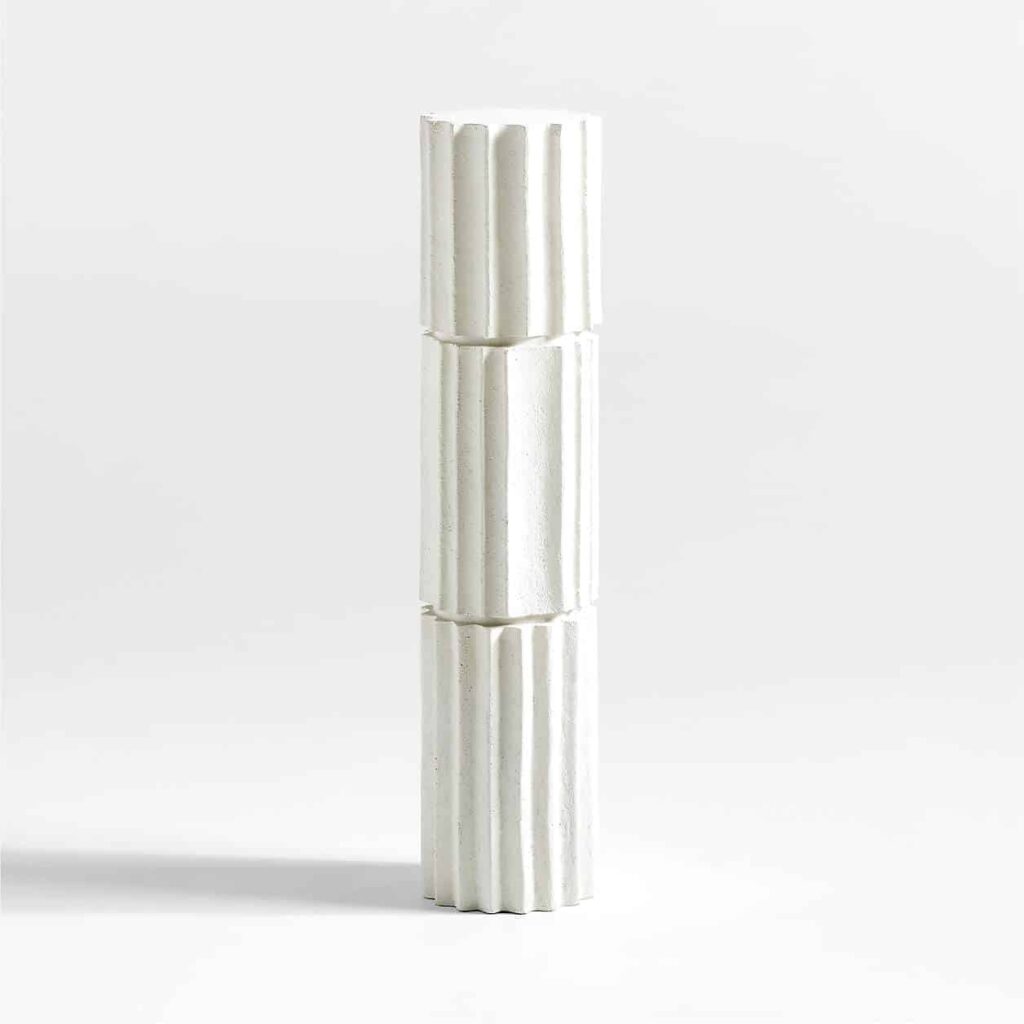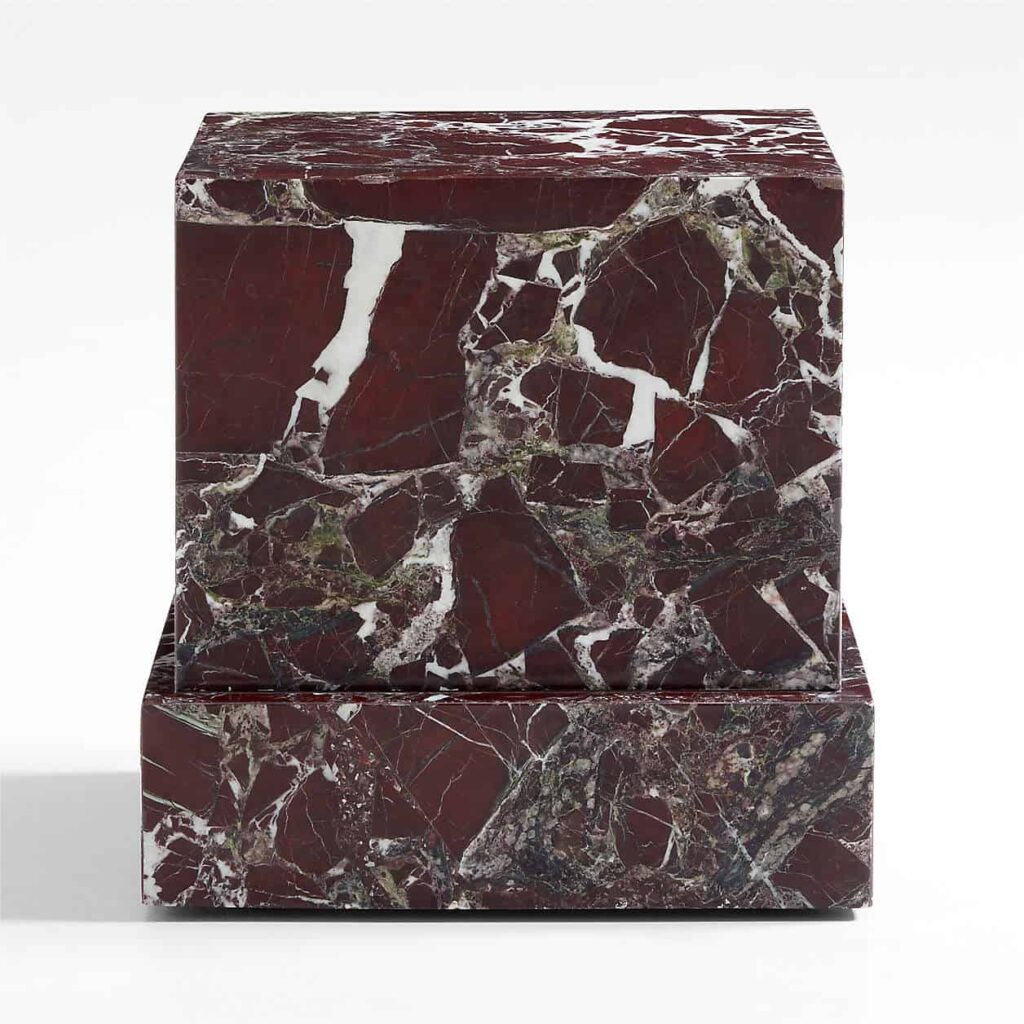How to Choose the Perfect Pedestal for Your Sculpture

Pedestals for sculptures are like a small stage to perform and tell a story. A pedestal must support the sculpture while bringing attention to the piece and allowing others to view the artwork from the appropriate angles. While pedestals and bases are subordinate to the work, they can also help a sculpture stand out, if chosen with intention.
Critical, and often overlooked, is the space between the ground and the sculpture. The base plays an integral part in the comprehension of artistic space, which is why it is crucial to choose the best pedestal that complements the sculpture and creates a feeling of harmony within the room’s theme.
Sparks Gallery can help guide you in choosing a pedestal for your piece. Choosing a supporting base for a sculpture can be a little tricky. Below are our recommendations for finding the best pedestal bases for your work of art.
Understanding the Space
Selecting the best pedestal for a sculpture can be easy, even if all the choices make the experience seem daunting. Square pedestals, round pedestals, wall mounts, different sizes, different mediums, and even glass pedestals with soft lighting underneath give an art collector unlimited options.
To begin, look closely at what you plan to display, along with the traits, colors, and features of the space around it. White or off-white walls can support various pedestal colors and finishes. Many art collections pair deeper or rich colors with a white, neutral stone, or clear pedestal. Working with an interior designer can also help navigate color, proportion, and perspective design elements.
Related: Sculptures Available at Sparks Gallery
The ideal pedestal is going to differ for each sculpture. Because every sculpture is unique, each pedestal will showcase the work differently.
Recommended: Pompeii Fluted Pedestal Table
Understanding the Base
The purpose of the base is to support the artwork without overshadowing it. A proper mount and its placement in the space should enhance the work as a compliment to the sculpture.
Materials
The materials of available pedestals vary greatly. The choice of medium depends on the room’s style and theme. In a more rustic or textural setting, a natural wood base or natural stone might be best. For a minimalistic or modern space, your sculpture may benefit from a glass, metal, or acrylic base to display the sculpture.
Color
The color you pick for your pedestal will either enhance or take away from the sculpture. Most collectors choose to go with muted colors or those that complement the artwork but don’t be afraid to think outside the box to create a daring visual contrast.
Recommended: La Sienna Piccolo Dark Red Marble Plinth Side Table
Related: Collector Resources
Style
Round, rectangular, wall-mounted, free-standing, and portable, the style of your pedestal can change everything. One of the main goals of a pedestal is to add visual interest to your sculpture, so the style is important. The style of the pedestal will ensure that the viewer’s attention is focused on your piece.
Large rectangle platforms are trendy among curators because of their sleek modern look. In a smaller venue, a smaller, more rounded pedestal will save space. When floor space is limited, you might choose a wall-mounted sculpture base to display the work.
To view more unique art pieces and sculptures, visit Sparks Gallery’s Shop.
Recommended: Relic Oak Pedestal Table
Shape and Size
Shape and size matter as well. A pedestal must assist with the proper viewing angles of your sculpture.
If the sculpture is wide, you can choose a base with the exact dimensions to give the illusion that it is part of the sculpture. When the sculpture is tall, we recommend having a shorter, wide base that is wider than that of your sculpture for structural support.
If the size of the sculpture is large but not as tall, you can opt for a wide base to protect and support the artwork. Keep in mind how you want to view the work. Would you prefer to look at it at eye level, or above from the top?
Extras
Back in the Renaissance, it was easier to choose the color and style of the pedestals on which art would be displayed. Famous sculptors would create their works and then place them upon the same material that the piece had been sculpted.
For example, a marble statue would rest upon a polished block of marble found in that area. Over time this process has become much less of a standard rule. In 2022, there is more artistic liberty when choosing displays for your sculptures.

Related: The Best San Diego Museums
It is important to note the angles and fine details that can make a big difference in lighting the piece. Extra lighting is important for the proper display of sculptural works, as it allows the curator to control how shadows fall on the piece. Many modern pedestals come with built-in LED light systems that can be controlled and changed depending on the artwork. You should be aware of shadows and natural light in your space before tackling a new lighting system for the work.
Pedestals for Sculptures Final Thoughts
A pedestal should safely support the sculpture and provide the best viewing angles for the artwork. Whether you select the pedestal yourself or have help picking the perfect pedestal, you will need to consider the size, location, aesthetics, and lighting for the pedestal.
Request a complimentary recommendation for pedestals from Sparks Gallery.




